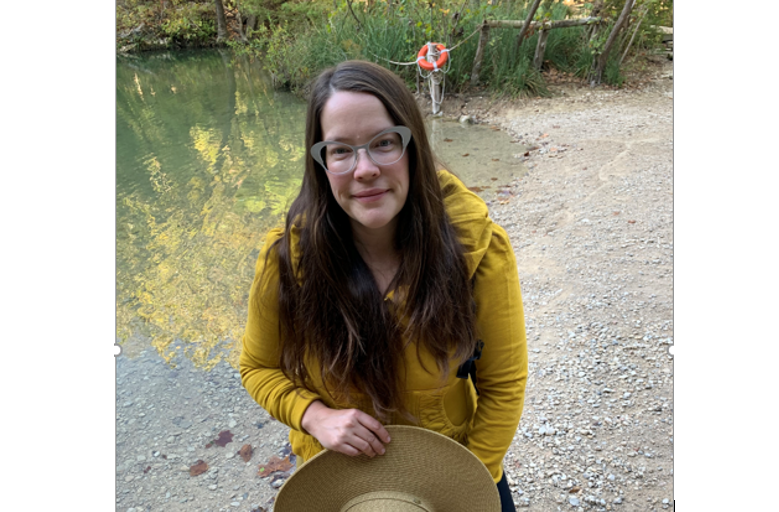By Jim Phillips. UC Santa Cruz recently hired its first chief experience officer (CXO) in the IT department—Phyllis Treige. This new role is a key component of Vice Chancellor of Information Technology Van Williams’s vision for digital transformation. While the idea of integrating user experience into an IT organization is still fairly novel in higher education, in the corporate world it has been critical in helping organizations become more agile and responsive to customer needs.
“Experience design is not a nice-to-have, an afterthought, or technological fluff,” Williams said. “It is what makes technology, data, interactions, and processes usable, equitable, accessible, inclusive, and ultimately… human. Where technology by itself can sometimes close doors to users, great design not only opens doors but also makes those doors bigger. I created the CXO role to bridge the gap between the story we tell of the UCSC experience and digital experiences that bring the UCSC story to life.”
The CXO role at UCSC is responsible for putting users and their needs at the center of everything the organization does, from communications to product and service delivery to strategic initiatives. And this emphasis on users extends to building capacity and confidence throughout the organization so that everyone can take informed action on the needs of users and adapt more quickly to the dynamic needs of campus.
Hired in February 2021, Treige comes most recently from the University of Wisconsin–Madison, where she served as the director of the Center for User Experience and assistant director of Academic Technology. Treige has 18 years of experience initiating and leading complex digital transformation efforts. She has created and overseen experience visions and strategy, and built teams that champion human-centered practices across the life cycle of discovery, design, implementation, and ongoing delivery.
“I was drawn to UCSC and this position for many reasons,” Treige said. “Chief among them the opportunity to be a part of a public university that has accomplished so much in a relatively short period of time and still held on to what makes the university distinctive. I am thrilled to have joined such a vibrant community of impassioned and innovative people, and to have the opportunity to help shape the digital experience for the future.”
Why Does Experience Design Matter?
UCSC’s physical environment has always been a big part of what makes the campus special. The move to remote work and learning, as a result of the COVID 19 pandemic and wildfires, has underscored the need for a digital campus experience that is just as inspiring, vibrant, and functional.
To design great experiences, Treige contends that we have to consider much more than the visual or interface design of a product or service. We need to deeply understand
- Users and their needs,
- The data sources and how they are integrated,
- The information architecture, content, and visual design and how they are experienced across touchpoints, and
- How the service will be funded, marketed, and supported.
Finally, we have to bring all these pieces together in ways that harmonize and are genuinely sustainable for the teams that support the experiences.
In short, she believes we need a LOT more information from users. Within ITS and across the campus, she hopes to strengthen a collective sense of responsibility to improve the quality of the UCSC experience with and for students, faculty, and staff. Treige said, “We are all designers, whether we know it or not. Every one of us makes design decisions on a daily basis, and those decisions have consequences for the people that rely on our services and platforms.”
Rather than being one more thing to add to the requirements heap, Phyllis believes that design is a way of working that can help to more clearly define problems, achieve meaningful outcomes, strengthen strategic partnerships, and boost team morale.
First Steps for Experience Design at UCSC
Out of the gate, Phyllis is focused on getting to know the UCSC landscape, which involves a lot of meetings to get to know people and the organizational structures in place that keep the trains running. Simultaneously, she is building a team of expert design professionals, along with knowledgeable and well-equipped design allies throughout the organization. She is also seeking ways to create opportunities for student staff interested in learning more about design careers.
From a team structure perspective, the Experience (EXP) unit is taking shape as shown in the graphic below:
Learn More
Stay tuned for upcoming experience design job openings at UCSC, including a manager position and three to four user experience designer positions.
Join colleagues on the UCTech Slack channel #ux-andor-design, and let us know what “design” means for you, or share a design faux pas you have ever experienced recently. You may also reach out to Treige directly by email.
 Jim Phillips is director, Campus Engagement, Information Technology Services, UC Santa Cruz.
Jim Phillips is director, Campus Engagement, Information Technology Services, UC Santa Cruz.








